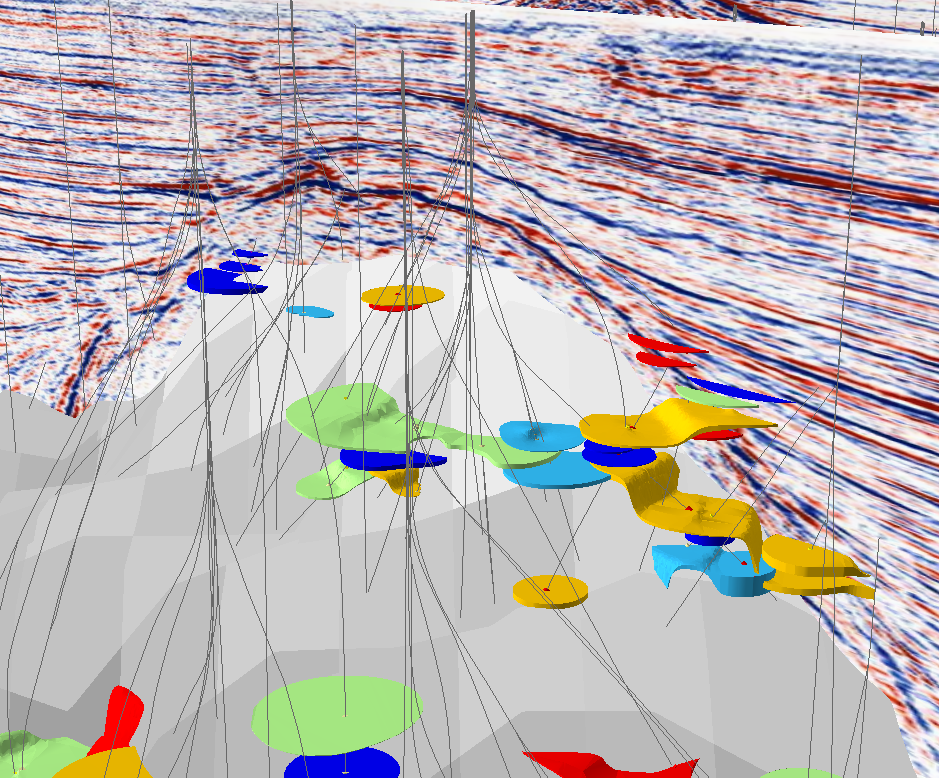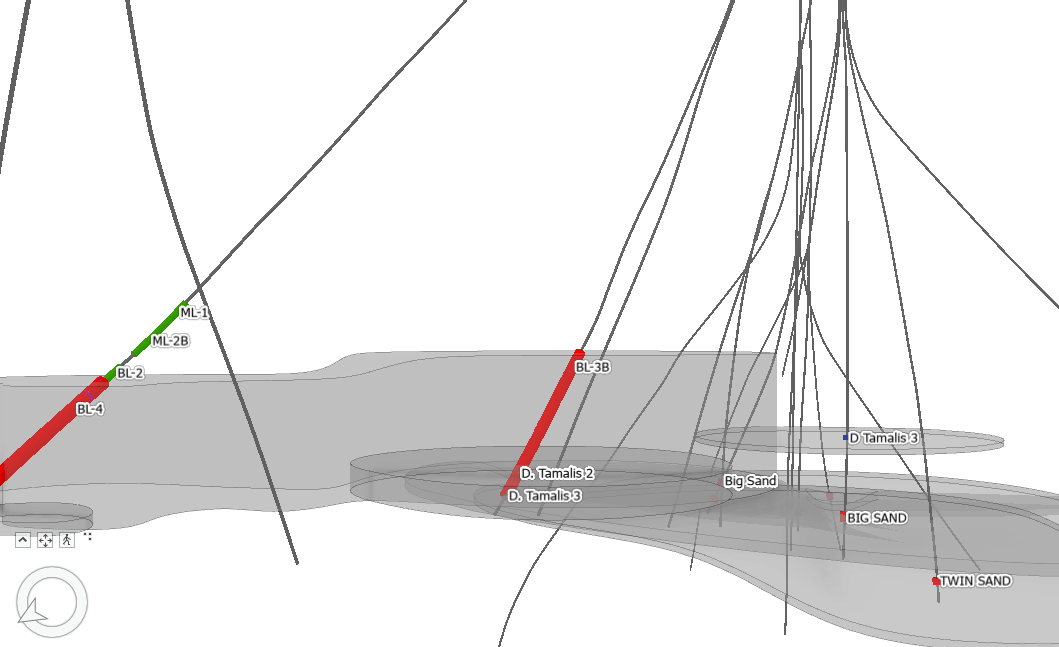No geologic variable in the GOM has played a greater role than salt in the accumulation of oil and gas. Over half the discovered oil (over 12 billion bbls) and a third of the gas (66 TCF) were found in traps directly related to salt. In the Geophysical Addon, salt has been extracted in two very different ways. In the 3D Seismic Scenes, salt is extracted from the velocity cubes based on the sharp break in velocities that occur where salt is located. These dramatic displays are loaded automatically with the 3D Seismic Scenes as shown here:
But the original work on salt involved the thousands of 2D seismic lines across the Gulf. Covering a whole basin, this is a unique collection of seismic data and invited us to analyze all of the lines collectively using machine-learning techniques. For a basin in which salt has played such a central role in forming oil and gas fields, the first priority was discriminating salt on all of the lines and producing a basin-wide top of salt map.
The last 5 years of the geophysical literature reports a few experiments in machine-identification of salt but these projects typically include only a few lines as examples and employed “supervised learning.” Supervision means the algorithms required an input set of salt/no-salt examples prepared in advance by geophysicists. By contrast, we applied our technique to 8,000 lines and employed “unsupervised learning,” meaning that our algorithms were not given a set of examples of what is and isn’t salt.

The top of salt at Ship Shoal 154.
Using these salt boundaries within the images, the top of salt was found and mapped to create a basin-wide top of salt map for most of the western and central regions of the Gulf of Mexico. The first-generation Gulf-wide top of salt map is included in the new Geophysical Addon in three ways: as a map in time, in depth and as 3-D surfaces introduced into the 3-D field models of GOM3, providing greater context to the reservoir and well data.

Depth to the top of salt in central Eugene Island and Ship Shoal areas.
Even more well data has been mapped in three dimensions for analysis in the Geophysical Addon. Geomarkers, Hydrocarbon Bearing Zones and Mud Weight values have been collected from the operators' weekly reports dating back to 2000 and are loaded into 3D scenes along their repective boreholes. These datasets are updated monthly for all subscribers to the Geophysical Addon.

Hydrocarbon Bearing Zones, labeled and colored by type within transparent, grey sands of Garden Banks 260.




